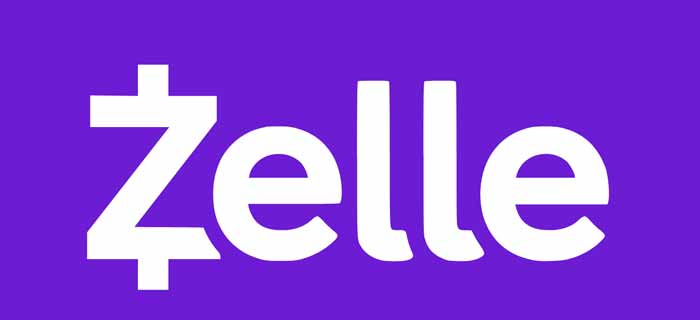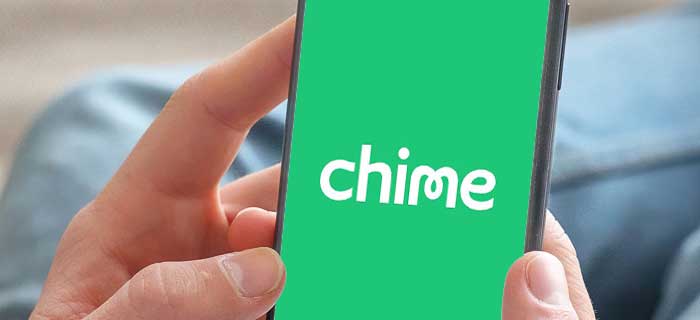Zelle, supported by almost all the central banks in the US, is our favorite for domestic transfers, right? I use it frequently to send money from Zelle to Venmo or Zelle to Cash App when I have to share funds with my friends or family, but recently, I came across a query: Is Zelle an ACH transfer? Let’s see if I can help you determine the answer!
Do Zelle Payments Process As ACH Transfers?
You must have come across the terms “ACH payments” before, as these are increasing in popularity for both business-to-business and person-to-person transactions.
It is a cost-efficient and user-friendly payment processing network that many banks, credit unions, and money transfer apps use.
Zelle uses the Automated Clearing House (ACH) payment system to process the transactions between the platform and US bank accounts. However, Zelle payments are different in operation, as they are completed within a few minutes. In contrast, a typical ACH transfer from one bank account can take up to three days.
What Is Automated Clearing House (ACH) Transfer?
The Automated Clearing House network manages ACH transfers to perform money transfers between different banks.
This transfer form is used to send money electronically from person to person, make bill payments, make direct deposits, send funds externally, etc. Other examples include:
- Recurring deposits
- Taxable brokerage account deposits
- Getting government benefits
There are two types of ACH transfers. Below is a quick summary of how these work.
| ACH Debit Transactions | ACH Credit Transactions |
| Money is pulled from the account, such as in case of bill payments. | Money is pushed to other account online, such as to other bank accounts, friends accounts, etc. |
What Are Fees and Limits For ACH Transfers?
Let’s begin with some good news: ACH transfers are typically free!
This holds for payroll direct deposits and bill payments, but in some cases, expedited bill payments may be charged. There are also fees for ACH credit transfers, but these are mainly limited to $3 and nothing more than that.
Some ACH-based payment platforms charge a fee for peer-to-peer money transfers, but that generally depends on which app you are using.
When you look at how long ACH payments take to process, you will also see a lot of variation here. Typical ACH transfers can take up to several days. They are also restricted to business days only as a network operator has to process these, and banks close on weekends and holidays. There can also be unexpected delays in the payment processing.
Are There Any Restrictions On ACH Transfers?
ACH transfers are typically not used for sending money internationally, but that does not make them any more free of restrictions and limitations. Some of the things you have to consider with Zelle ACH transfers are:
- Transfer Limits: There is a cap on how much you can send from your account in a day or a week.
- Penalty Fees: Banks often charge a fee when you begin a transaction with insufficient funds and then cancel the transfer.
- International transfers: ACH transfers do not support international transactions. You can only send and receive money within the US.
- Cutoff Hours: ACH transfers are not available all around the clock. They operate in a specific time frame and are paused for the next business day when the time per day is complete.
You must check out your bank and ACH policies to confirm how the transfer would work in your case. Sometimes, the fees, transfer time, and limit vary as per the bank’s money transfer protocols.
Why Are ACH Transfers Preferred?
With a handful of restrictions mentioned above, why do banks and financial institutions use this payment processing mode?
ACH transfers are not without its sheer share of benefits. It is convenient, easy to integrate with banking services, takes less time to process, and is cost-effective.
- ACH transfers are initiated right after you press the send button. Delay only occurs because of specific operating rules or weekends/holidays.
- They are more user-friendly than writing a check or making debit card/credit card transfers.
- ACH transfers are also free, although there may be minimal charges, but only if your bank applies them.
- They are less costly than wire transfers, which charge up to $25-$75 for sending money internationally.
Other Banks That Support ACH Payment Option
ACH payment processing is a growing trend. Since it is super easy to integrate with banking services, an increasing number of financial institutes need to pay attention to ACH transfers.
It wouldn’t be possible to list down all the banks in the US that support the ACH payment option, but here are the top 30 names that you should check out:
- Capital One
- Bank of America
- Chase
- BBVA Compass
- Bluebird By American Express
- Citi
- Wells Fargo
- Union Bank
- TD Bank
- Bank of Internet USA
- Empower Federal Credit Union
- Horizons Credit Union
- Citizens Banks
- Citizes Equity First Credit Union
- Huntington Bank
- North Island Credit Union
- Credit Union One
- Fidelity
- GoBank
- Gulf Winds Federal Credit Union
- Kitsap Credit Union
- Lake Trust Credit Union
- Kinetic Credit Union
- Michigan First Credit Union
- One United Bank
- Randolph Brooks Federal Credit Union
- SunTrust
- USAA
- US Bank
- The Washington Trust Company
How Does Zelle App Work?
Zelle is a competitive peer-to-peer payment app that works similarly to PayPal, Cash App, and Venmo. It allows users to share funds quickly with other accounts and manage small business payments without additional charges.
Zelle transactions take up to a couple of minutes. The money transfer is secured through PIN and data encryption.
You can set up a Zelle account right now by getting help from your financial institution or downloading the Zelle mobile app. Zelle’s payment app was launched in collaboration with almost all the majority banks and credit unions in the US; therefore, it can guide you on enrolling in Zelle.
You don’t necessarily need a bank to work with Zelle. You can download the app and provide your username and password to create an account.
How To Send Money With Zelle ACH Transfer?
It is a sweet piece of cake to send money to anyone over Zelle once you have successfully set up your account. The steps you need to take are:
- Decide who you want to send money to.
- Enter the recipient’s account information, including email ID or phone number.
- Then, enter the amount of money that you want to send.
- Click on the Send button to initiate the payment.
Sounds pretty straightforward. You must watch out for a few things, so hold your excitement a bit longer!
First, I will strongly discourage using Zelle to receive or send payments to accounts you don’t personally know or trust.
There is little that this app can do to refund the money if you accidentally send it to the wrong recipient or a scammer. Additionally, Zelle does not present the option to cancel a payment.
Your only hope is that the recipient needs a Zelle account. The money would sit in the process and, eventually, be sent back to your bank account. You can choose to Cancel the Payment in this scenario as well. Open the Account Activity page and click on Cancel This Payment.
What if you are on the other end of the transaction? For the recipients of Zelle transfers, it is convenient to have a Zelle account so the payment will go directly into the linked bank account without delay.
It is also the case that non-Zelle recipients are encouraged to first sign up with the service even if they choose not to link a bank account. They can also access the funds in this manner, although the transfer would take up to 3 days.
Which Banks Support Zelle Payments?
It is beyond the scope of this blog to cover all the banks that support Zelle, but currently, more than 10,000 banks and credit unions work with Zelle payment platforms. New names are also expected to be added in the coming years.
This is because the banks themselves came together to launch this app. Early Warning Services, LLC owns Zelle, but it wouldn’t have been possible without the efforts of US banks like Wells Fargo, Capital One, PNC Bank, Chase, etc.
What Are Zelle Transfer Fees and Limits?
Zelle transfer limits vary depending on the bank that you are using. Below are the figures for some of the most prominent names that you may want to check out.
| Bank/Credit Union | Daily Transfer Limit |
| Wells Fargo | Up to $35,000 |
| Chase | Up to $20,000 |
| Bank of America | $3,500 |
There is a lot of variation in the daily transfer limit that Zelle provides to users, keeping given factors like account type and account history. For example, Chase private clients can enjoy higher daily transfer amounts; Wells Fargo generally lowers the transfer cap for its new users.
Is Zelle Safe To Use For Money Transfers?
Customers using Zelle for small business payments or daily transactions with friends and family have nothing to worry about.
Zelle knows how to keep money safe through data encryption, authentication procedures, and monitoring features.
The trouble is if you begin to use this platform for large purchases, sending money to retailers you don’t know, or transferring huge funds to unknown personal accounts.
Zelle is fast and convenient, but it was designed to be something other than a credit card, debit card, or bank account. Such services protect users from fraudulent transactions. They also have protocols to refund an amount if the scam is detected. Zelle does not offer any such buyer protection, and it has not made false promises to get your money back if you are scammed.
How ACH Differs From Wire Transfer?
As you dig deeper into the payment processing network and more, you will observe that ACH is often preferred to wire transfers for sending money from one account to another.
This is because these are the most prominent electronic money transfer types used extensively by peer-to-peer payment services and banks/unions in the USA. Let’s take a look at ACH vs wire transfer.
ACH vs Wire Transfer
| ACH Transfer | Wire Transfer | |
| Transfer Limits | Limits apply depending on transfer protocols set by the banks | Limits apply depending on transfer protocols set by the banks/service. |
| Transfer Fees | It charges 1% of the transaction amount as fee. The recipient does not need to pay any fee. | These are costlier than ACH. Charge up to $100 depending on bank and location. There may also be additional fees that the recipient has to pay to get the funds. |
| Transfer Time | Take up to three days for the money to travel from sender to recipient. The funds will appear in the recipient account as soon as they are received | The transfers are processed on the same day. The funds will appear in the recipient account as soon as they are received |
| Payment Options | Direct payments from bank accounts | Wire transfers can take place between bank account, debit cards, credit cards, P2P apps |
| Security | NACHA security system | CFPB for fraud and consumer protection. |
| Threats | There are generally no threats for ACH transfers thanks to NACHA network that is a very secure option for sending money | Wire transfers do not operate with a highly secure system. Therefore, senders are often at the risk of losing money. Wire transfers are also impossible to reverse so there is nothing you can do about the money that you end up sending to a wrong account. |
| Reach of Operation | ACH transfers are meant to send money locally. Global ACH transfers are available but their operation relies completely on banking network. | Wire transfers are frequently used for cross-border payments. |
| Reversals | You can request a reversal in case of an error. | You can not get a reversal |
Before You Go!
Zelle is an ACH transfer that has made money transfers free, quick, and accessible to everyone.
New Zelle users need to gain more knowledge of how this platform works. If you are also one of them, you may not want to leave without reading whether Zelle reports to the IRS. Moreover, if the wire and international transfers have gotten your attention, check out whether Venmo works internationally. Just a few minutes read!

Miriam Caldwell is a dedicated & expert freelance writer to educate people about personal finance management and budgeting. She shared her knowledge and published the articles at TheBalance.com, GOBankingRates, and BlissfullyDomestic.com. Many financial institutes pick Caldwell as the brilliant source for educational personal finance content.







